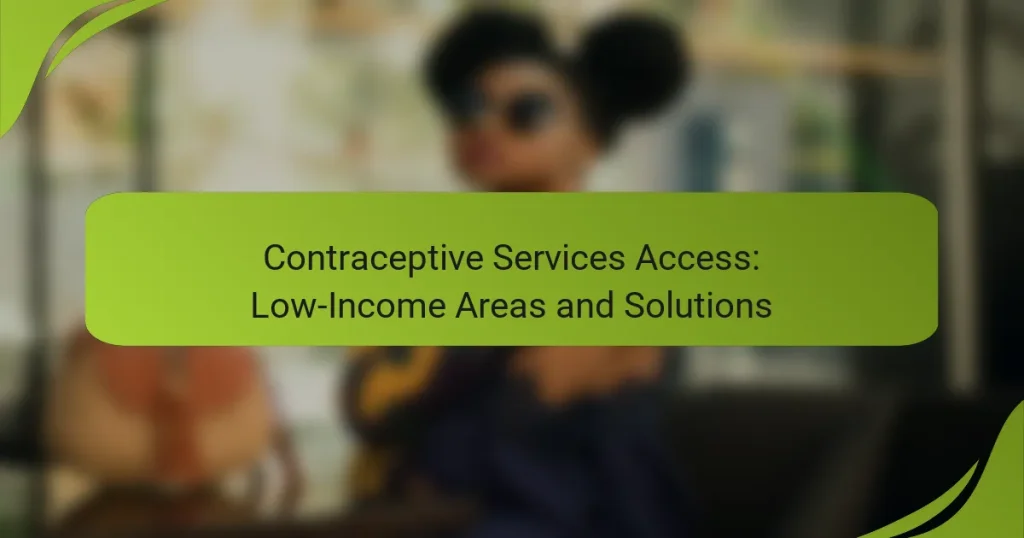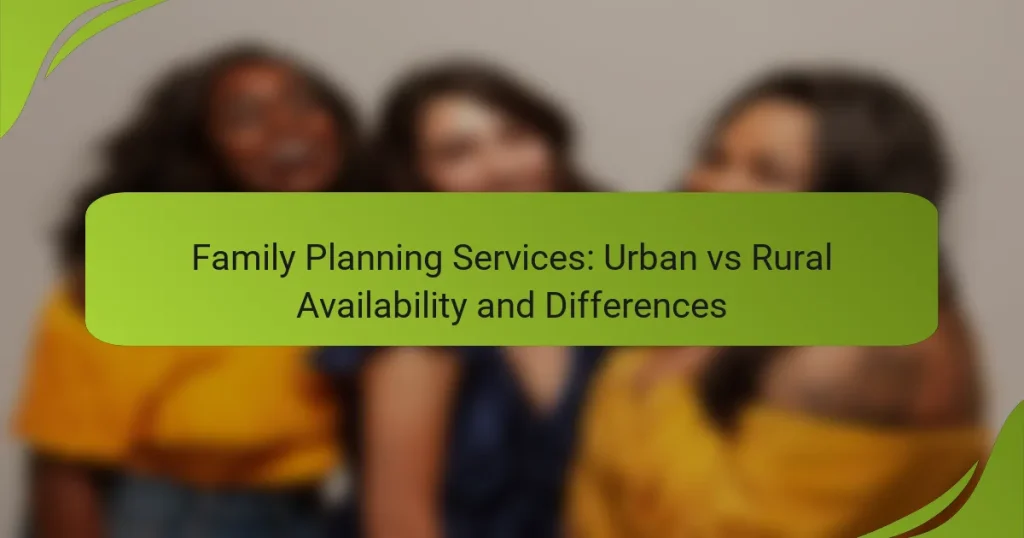Women’s health and rights initiatives play a crucial role in promoting reproductive rights and services, ensuring that women have access to safe and legal abortion, comprehensive healthcare, and equitable family planning resources. By empowering women to make informed choices about their reproductive health, these initiatives contribute to better health outcomes and an improved quality of life. Access to a range of reproductive health services, including contraception and STD testing, is essential for supporting women’s autonomy and well-being.
Advocacy Groups: Role in Protecting Women’s Reproductive Rights
Contraceptive Services Access: Low-Income Areas and Solutions
Comprehensive Sex Education: Importance for Women’s Health and Rights
Reproductive Rights Legislation: State Variations and Impacts
Family Planning Services: Urban vs Rural Availability and Differences
Abortion Access Barriers: Regional Challenges and Solutions
What are the key reproductive rights initiatives in the United States?
Key reproductive rights initiatives in the United States focus on ensuring access to safe and legal abortion, comprehensive reproductive health services, and equitable funding for family planning. These initiatives aim to empower women to make informed choices about their reproductive health and rights.
Roe v. Wade
Roe v. Wade is a landmark Supreme Court decision from 1973 that established a woman’s legal right to have an abortion under the constitutional right to privacy. This ruling effectively legalized abortion across the United States, allowing women to make personal decisions regarding their pregnancies without excessive government interference.
Despite its significance, Roe v. Wade has faced numerous challenges and legal battles over the years. States have enacted various laws that attempt to restrict access to abortion, leading to ongoing debates about reproductive rights and the future of this ruling.
Planned Parenthood services
Planned Parenthood is a vital provider of reproductive health services in the United States, offering a range of services including contraception, STD testing, cancer screenings, and abortion care. These services are designed to promote reproductive health and empower individuals to make informed choices.
Many Planned Parenthood health centers operate on a sliding scale fee structure, making services accessible to individuals regardless of their income. This accessibility is crucial for low-income populations who may otherwise face barriers to obtaining necessary reproductive health care.
Title X funding
Title X is a federal program that provides funding for family planning and reproductive health services, ensuring that low-income individuals have access to essential care. This funding supports clinics that offer services such as birth control, health screenings, and education on reproductive health.
Title X funding has been subject to political scrutiny and changes in administration, affecting the availability of services in various states. Understanding the implications of Title X funding is important for advocates and individuals seeking reproductive health care, as it directly impacts service accessibility and quality.
How do reproductive rights impact women’s health?
Reproductive rights significantly influence women’s health by ensuring access to necessary healthcare services, including contraception and safe abortions. When women have control over their reproductive choices, they experience better health outcomes and improved quality of life.
Access to safe abortions
Access to safe abortions is crucial for protecting women’s health and autonomy. In regions where abortion services are restricted, women may resort to unsafe procedures, leading to severe health complications or even death. Ensuring legal and safe access helps reduce these risks and supports women’s rights to make informed choices about their bodies.
Countries with comprehensive reproductive health policies often see lower rates of maternal mortality associated with unsafe abortions. For instance, in the European Union, access to safe abortion services is generally well-regulated, contributing to better health outcomes for women.
Maternal health outcomes
Maternal health outcomes are closely linked to reproductive rights, as access to prenatal care, safe abortions, and family planning services can significantly reduce complications during pregnancy and childbirth. Women who can make informed reproductive choices are more likely to seek necessary medical care, leading to healthier pregnancies.
In many developing countries, lack of access to reproductive health services contributes to high maternal mortality rates. Programs that promote reproductive rights and provide education on family planning can improve these outcomes, demonstrating the importance of integrating women’s health services into broader healthcare systems.
What services are available for reproductive health?
Reproductive health services encompass a variety of options designed to support women’s reproductive rights and health. These services include contraceptive methods, family planning resources, and testing and treatment for sexually transmitted diseases (STDs).
Contraceptive options
Contraceptive options are essential for women to manage their reproductive health effectively. Common methods include hormonal pills, intrauterine devices (IUDs), condoms, and implants. Each method has different effectiveness rates, costs, and side effects, so it’s important to consult with a healthcare provider to choose the best option.
For example, hormonal pills can be very effective if taken consistently, while condoms also provide protection against STDs. Costs can vary widely, with some methods being available for free through public health programs, while others may require out-of-pocket expenses.
Family planning resources
Family planning resources help individuals and couples make informed decisions about their reproductive lives. These resources often include counseling services, educational materials, and access to various contraceptive methods. Many clinics offer free or low-cost family planning services, making them accessible to a broader population.
In the U.S., the Title X program provides funding for family planning services, ensuring that low-income individuals receive necessary care. It’s advisable to research local clinics or health departments to find available family planning resources in your area.
STD testing and treatment
STD testing and treatment are crucial components of reproductive health services. Regular testing can help detect infections early, allowing for timely treatment and reducing the risk of complications. Many healthcare providers recommend annual testing for sexually active individuals, especially those with multiple partners.
Testing is often available at clinics, hospitals, and even some pharmacies. Treatment options vary depending on the STD, with some infections being easily treatable with antibiotics, while others may require more complex management. Many public health programs offer free or low-cost testing and treatment services, making it easier for individuals to prioritize their sexual health.
What are the challenges facing reproductive rights today?
Reproductive rights face numerous challenges, including legal restrictions and funding issues that limit access to necessary services. These obstacles can significantly impact women’s health and autonomy regarding reproductive choices.
State-level restrictions
State-level restrictions on reproductive rights vary widely across the United States, often resulting in significant barriers to access. Many states have enacted laws that impose waiting periods, mandatory counseling, and limitations on when abortions can be performed, which can complicate the decision-making process for women.
For instance, some states require parental consent for minors seeking abortions, while others have implemented gestational limits that restrict access after a certain point in pregnancy. These regulations can create confusion and lead to delays in obtaining care, which may affect health outcomes.
Funding cuts to health services
Funding cuts to reproductive health services have become increasingly common, impacting organizations that provide essential care. Many clinics rely on federal and state funding to offer services like contraception, cancer screenings, and abortion care, and cuts can lead to reduced availability of these services.
For example, the defunding of Planned Parenthood in certain states has resulted in fewer clinics operating, which disproportionately affects low-income women who may not have other healthcare options. Maintaining funding for these services is crucial to ensuring equitable access to reproductive healthcare.
How can individuals advocate for reproductive rights?
Individuals can advocate for reproductive rights by engaging in community efforts, raising awareness, and supporting policies that protect these rights. Effective advocacy often involves collaboration with others who share similar goals and utilizing various platforms to amplify their message.
Joining local advocacy groups
Joining local advocacy groups is a powerful way to support reproductive rights. These organizations often provide resources, training, and a community of like-minded individuals committed to the cause. Look for groups that align with your values and goals, whether they focus on legislative change, education, or direct support services.
Consider participating in meetings, volunteering for events, or contributing to campaigns. Many groups also offer online platforms for engagement, making it easier to connect with others and stay informed about local issues and initiatives.
Participating in awareness campaigns
Participating in awareness campaigns can help elevate the conversation around reproductive rights. These campaigns often include social media outreach, public demonstrations, and educational events that aim to inform the public and policymakers about key issues. Engaging in these activities can help spread crucial information and mobilize community support.
To get involved, look for upcoming campaigns in your area or online. You can also create your own initiatives, such as hosting informational sessions or sharing resources on social media. Remember to use clear messaging and reliable sources to enhance credibility and impact.
What role do international organizations play in women’s health rights?
International organizations are crucial in promoting and safeguarding women’s health rights globally. They provide frameworks, resources, and advocacy to ensure access to reproductive health services and uphold women’s rights in various contexts.
World Health Organization initiatives
The World Health Organization (WHO) leads numerous initiatives aimed at improving women’s health rights, particularly in reproductive health. These initiatives often focus on enhancing access to family planning, maternal health care, and education about reproductive rights.
For instance, WHO supports countries in developing guidelines and policies that promote safe childbirth practices and reduce maternal mortality rates. They also provide training for healthcare providers to ensure that women receive respectful and comprehensive care.
United Nations policies
The United Nations (UN) plays a pivotal role in shaping policies that protect women’s health rights through various treaties and frameworks. Key documents like the Convention on the Elimination of All Forms of Discrimination Against Women (CEDAW) emphasize the importance of reproductive rights as fundamental human rights.
Additionally, the UN conducts global campaigns to raise awareness about women’s health issues and advocates for the integration of gender perspectives in health policies. These efforts aim to ensure that women’s health needs are prioritized in national and international agendas.
What are emerging trends in reproductive health services?
Emerging trends in reproductive health services focus on accessibility, technology integration, and patient-centered care. These trends aim to enhance the quality of reproductive health services while addressing diverse needs and preferences of women.
Telehealth for reproductive care
Telehealth has become a vital component of reproductive care, allowing patients to access services remotely. This approach is particularly beneficial for those in rural areas or with mobility challenges, providing consultations, follow-ups, and even prescriptions through digital platforms.
Patients can engage with healthcare providers via video calls, chat, or phone, making it easier to discuss sensitive topics related to reproductive health. Many telehealth services offer a range of options, from general consultations to specialized care, often at a lower cost compared to in-person visits.
When considering telehealth for reproductive care, ensure the provider is licensed and follows local regulations. Check if your insurance covers telehealth services, as coverage can vary widely. Look for platforms that prioritize privacy and security to protect your personal health information.






